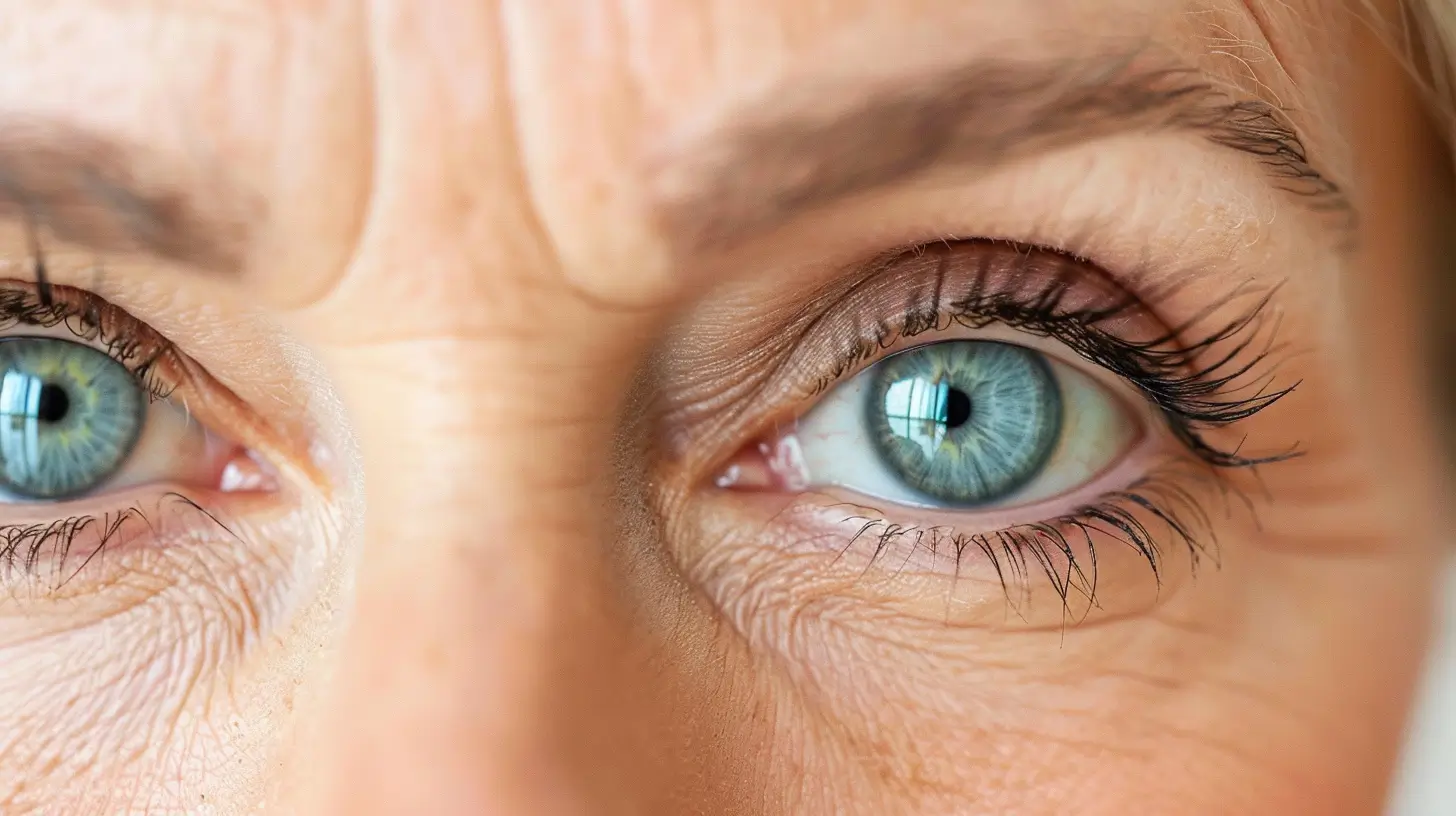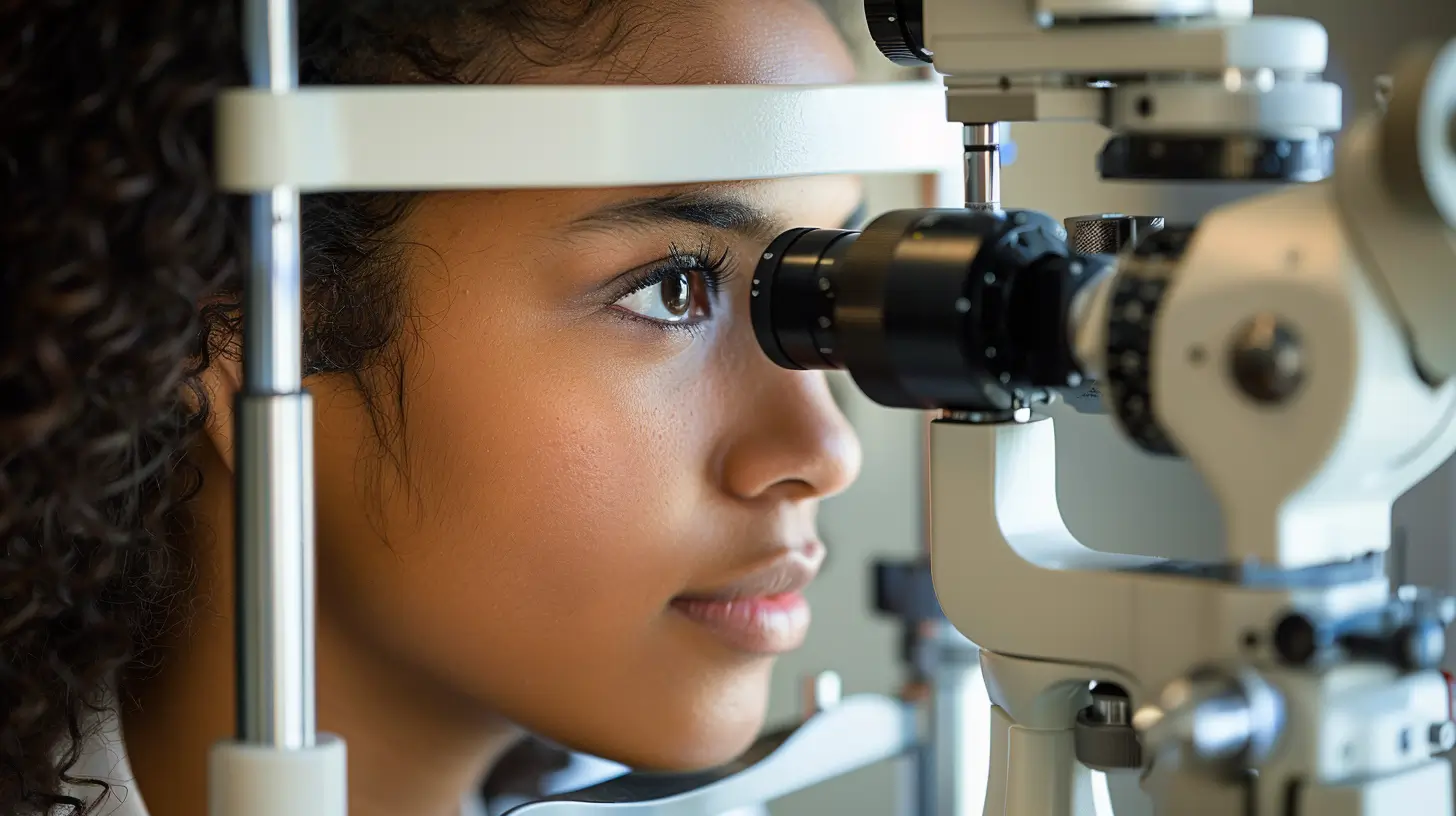The Ultimate Guide to Cataract Prevention
2024-04-09 | By Orcam Staff

Tips and Strategies to Protect Your Eyes
Cataracts are a common cause of vision loss, especially as we age. Yet, many people are unaware of the strategies available to prevent or delay their onset.
This article aims to shed light on cataract prevention. It provides a comprehensive guide to understanding cataracts, their impact on vision, and their prevalence globally.
We delve into the various risk factors for developing cataracts. These include age, genetics, and environmental influences, among others. We also explore the role of UV radiation and the importance of eye protection.
Nutritional strategies and lifestyle choices play a significant role in cataract prevention. We discuss these in detail, along with the importance of regular eye examinations.
Finally, we touch upon advanced cataract prevention strategies. By the end of this guide, you'll be equipped with the knowledge to protect your eyes and maintain your vision health.
Understanding Cataracts and Their Impact on Vision

Cataracts are a condition characterized by the clouding of the eye's natural lens. This clouding can lead to a decrease in vision and, in severe cases, blindness.
Preventing blindness is crucial, and understanding cataract prevention strategies can help prevent blindness caused by untreated cataracts. By implementing lifestyle changes, protective measures, and regular eye check-ups, you can effectively prevent blindness associated with advanced cataracts.
The lens of the eye works much like a camera lens, focusing light onto the retina. This allows us to see clearly. When a cataract forms, the lens becomes cloudy, distorting our vision.
Cataracts can affect one or both eyes. They develop slowly and may not affect vision in the early stages. However, as the condition progresses, it can significantly impact an individual's ability to perform daily activities.
Understanding cataracts and their impact on vision is the first step towards prevention. It allows us to take proactive measures to protect our eyes and maintain our vision health.
The Prevalence of Cataracts and Their Effect on Quality of Life
Cataracts are a common condition, especially among older adults. According to the World Health Organization, cataracts are responsible for 51% of world blindness, which represents about 20 million people.
The prevalence of cataracts increases with age. It is estimated that by the age of 80, more than half of all Americans either have a cataract or have had cataract surgery.
The impact of cataracts on quality of life can be significant. They can limit activities such as reading, driving, or even recognizing faces, leading to a loss of independence.
Identifying and Managing Risk Factors for Cataract Development
Understanding the risk factors for cataract development is crucial for prevention. Some of these factors are within our control, while others are not.
The primary risk factors include age, genetics, and environmental influences. By identifying these factors, we can take steps to manage them effectively.
Here are some of the key risk factors for cataract development:
Age
Genetics
Environmental influences
Smoking
Alcohol consumption
Diabetes
Prolonged exposure to sunlight
Age, Genetics, and Environmental Influences
Age is the most significant risk factor for cataracts. As we age, changes in the lens of the eye can lead to cataract formation.
Genetics also play a role. If your parents or other close relatives have had cataracts, your risk may be higher.
Environmental factors, such as exposure to radiation or toxins, can also contribute to cataract development.
The Role of UV Radiation and Eye Protection
Prolonged exposure to ultraviolet (UV) radiation from the sun can increase the risk of cataracts. This is particularly true for individuals who spend a lot of time outdoors without proper eye protection.
Wearing sunglasses that block 100% of UV rays can help protect your eyes. It's also important to wear a hat with a brim to shield your eyes from indirect sunlight.
Remember, even on cloudy days, UV radiation can still reach your eyes. So, make eye protection a part of your daily routine.
Nutritional Strategies for Cataract Prevention

Diet plays a significant role in maintaining eye health and preventing cataracts. Certain nutrients can help protect your eyes from damage and slow the progression of cataracts.
Here are some key dietary strategies for cataract prevention:
Consuming a diet rich in fruits and vegetables
Including foods high in antioxidants in your diet
Eating foods rich in vitamins C and E
Maintaining a healthy weight
Remember, a balanced diet is not just good for your eyes, but for your overall health as well.
Antioxidants, Vitamins, and a Balanced Diet
Antioxidants are substances that can prevent or slow damage to cells caused by free radicals. They are found in many foods, especially fruits and vegetables.
Vitamins C and E are particularly beneficial for eye health. They can help protect the eyes from damage caused by UV radiation.
A balanced diet is also crucial for maintaining a healthy weight. Obesity can increase the risk of cataracts, so it's important to eat a variety of healthy foods and maintain regular physical activity.
Remember, your diet can have a significant impact on your eye health. So, make sure to include plenty of nutrient-rich foods in your meals.
Lifestyle Choices and Cataract Prevention

Your lifestyle choices can significantly impact your risk of developing cataracts. Certain habits can increase your risk, while others can help protect your eyes.
Here are some key lifestyle choices for cataract prevention:
Quitting smoking
Limiting alcohol consumption
Maintaining a healthy weight
Regular exercise
Staying hydrated
Remember, your lifestyle choices can have a significant impact on your eye health. So, make sure to make choices that promote healthy eyes.
Smoking, Alcohol Consumption, and Weight Management
Smoking is a major risk factor for cataracts. It exposes your eyes to harmful toxins and increases oxidative stress.
Excessive alcohol consumption can also increase your risk. It can lead to dehydration, which can affect the health of your eyes.
Maintaining a healthy weight is also crucial. Obesity can increase your risk of cataracts, so it's important to maintain a balanced diet and regular physical activity.
Remember, your lifestyle choices can have a significant impact on your eye health. So, make sure to make choices that promote healthy eyes.
Regular Exercise and Hydration
Regular exercise can help maintain a healthy weight and reduce your risk of cataracts. It can also improve circulation, which is beneficial for eye health.
Staying hydrated is also crucial. Dehydration can affect the health of your eyes and increase your risk of cataracts.
Remember, regular exercise and hydration are not just good for your eyes, but for your overall health as well. So, make sure to include them in your daily routine.
How to Prevent Cataracts
To avoid cataracts and reduce the risk of developing them, it is essential to adopt certain preventive measures. Maintaining a healthy lifestyle by quitting smoking, limiting alcohol consumption, and engaging in regular exercise can help in preventing cataracts.
Additionally, protecting your eyes from UV radiation by wearing sunglasses that block 100% of UV rays and a hat with a brim when outdoors is crucial for reducing the risk of cataracts. Including foods rich in antioxidants, vitamins C and E, and maintaining a balanced diet with plenty of fruits and vegetables can also contribute to cataract prevention.
Regular eye examinations are important for early detection and monitoring of any changes in vision that could indicate the development of cataracts. By following these strategies on how to avoid cataracts, individuals can take proactive steps towards maintaining good eye health and reducing the likelihood of cataract formation.
The Importance of Regular Eye Examinations
Regular eye examinations are crucial for cataract prevention. They allow for early detection of any changes in your vision, which can be a sign of cataracts.
During an eye exam, your eye care professional can assess your eye health and provide recommendations for cataract prevention. This can include lifestyle changes, dietary recommendations, or protective eyewear.
Remember, early detection is key in preventing cataracts. So, make sure to schedule regular eye exams.
Advanced Cataract Prevention Strategies
In addition to lifestyle and dietary changes, there are advanced strategies for cataract prevention. These include protective eyewear, occupational safety measures, and the use of certain eye drops or supplements.
Protective eyewear: This can shield your eyes from harmful UV radiation and potential eye hazards.
Occupational safety: If you work in an environment with potential eye hazards, ensure you follow safety guidelines.
Eye drops and supplements: Some studies suggest that eye drops containing antioxidants or certain supplements may help prevent cataracts.
Protective Eyewear and Occupational Safety
Protective eyewear is essential for those exposed to high levels of sunlight or working in environments with potential eye hazards. Sunglasses that block UV radiation can help prevent cataracts.
In certain occupations, safety glasses or goggles may be necessary. These can protect your eyes from injury and potential cataract development.
Potential Role of Eye Drops and Supplements
Eye drops containing antioxidants may play a role in cataract prevention. They can help protect the eyes from oxidative stress, which can lead to cataract formation.
Certain supplements, such as vitamins C and E, may also help reduce the risk of cataracts. However, more research is needed to confirm their effectiveness. Always consult with a healthcare professional before starting any new supplement regimen.
Conclusion: Embracing a Comprehensive Approach to Eye Health
Cataract prevention requires a comprehensive approach that includes lifestyle modifications, a balanced diet, and regular eye care. It's about more than just avoiding certain risk factors; it's about embracing a lifestyle that prioritizes eye health.
Remember, early detection and intervention are key. Regular eye examinations can help detect cataracts in their early stages and allow for timely treatment. Stay proactive in your vision care and consult with an eye care professional for personalized advice.
Key Takeaways on How to Reduce Cataracts:
Quit smoking
Limit alcohol consumption
Stay hydrated
Regular exercise
Maintain a healthy weight
Wear sunglasses that block 100% of UV rays
Wear a hat with a brim when outdoors
Consume a diet rich in fruits and vegetables
Include antioxidants and vitamins C and E in diet
Maintain a balanced diet
More Stories

Veterans Associations and How They Can Help You - OrCam
2024-06-24 | By OrCam Staff

Top AI Assistive Technologies Enhancing Accessibility | OrCam
Explore how AI-driven assistive technologies are revolutionizing accessibility for individuals with disabilities.
2024-05-29 | By OrCam Staff

AI in Education: Enhancing Accessibility for All Students | OrCam
AI is changing the face of education by enhancing accessibility. Explore practical applications and success stories in educational technology.
2024-05-28 | By OrCam Staff

Revolutionizing Accessibility: How AI & IoT Enhance Assistive Technology
Explore the impact of AI and IoT on assistive tech, transforming accessibility and empowering lives with smart innovations.
2024-05-28 | By OrCam Staff

Transforming Lives: AI & IoT in Assistive Tech | Personal Stories
Read inspiring personal stories about the transformative power of AI and IoT in assistive technology.
2024-05-28 | By OrCam Staff

Unlock Reading Freedom: Tech for the Visually Impaired
Explore the latest in assistive technology designed to empower visually impaired individuals with independence and confidence.
2024-05-23 | By OrCam Staff



